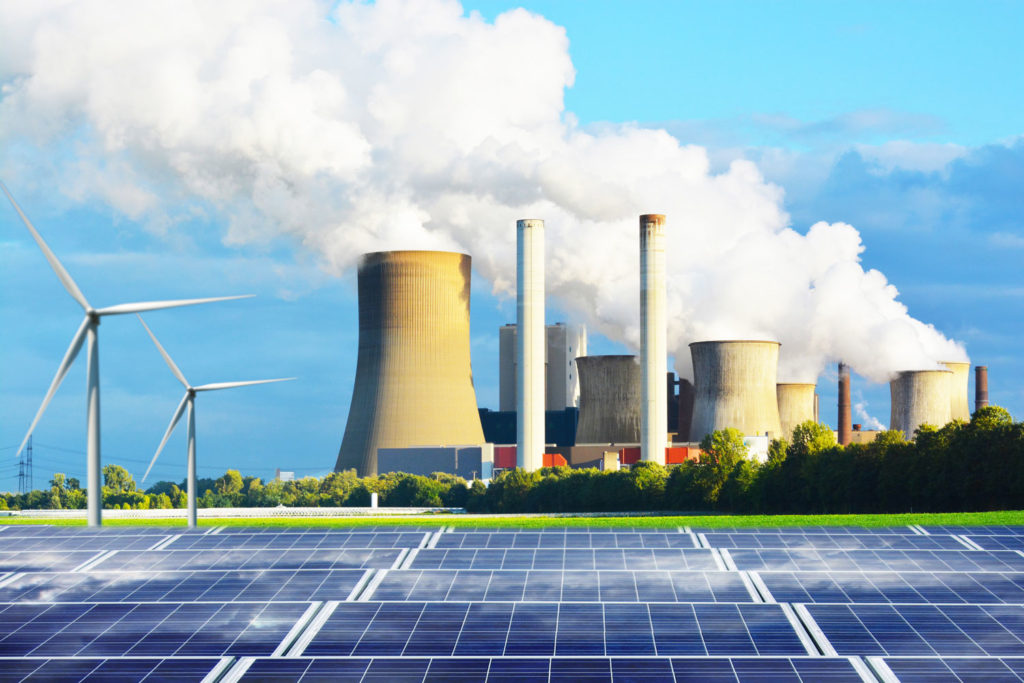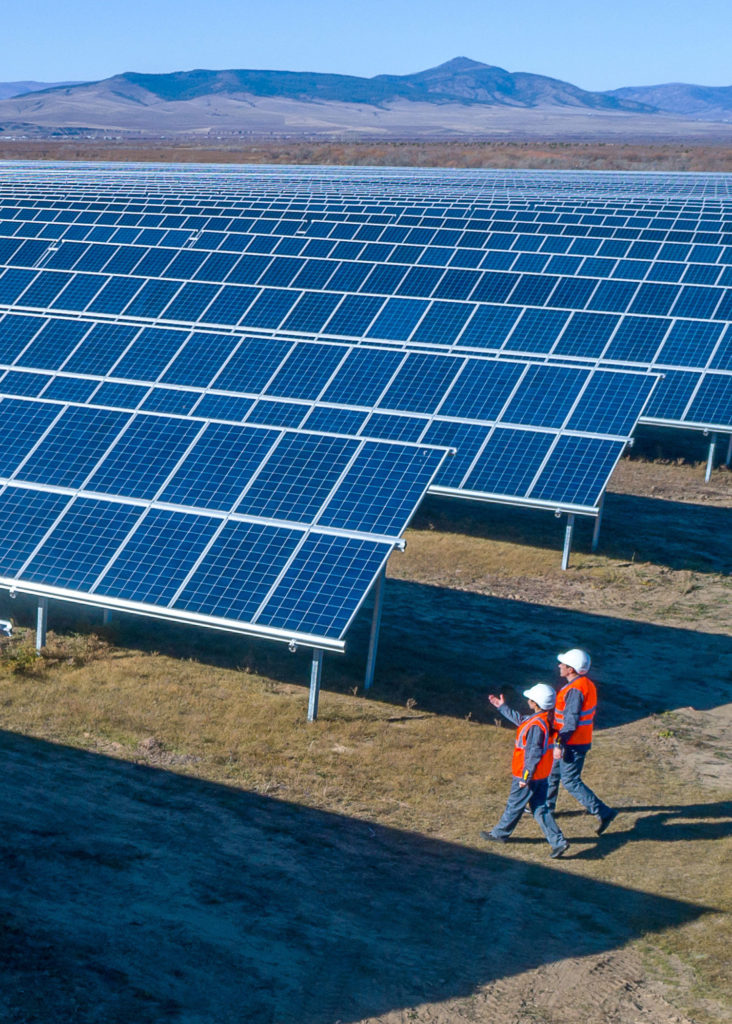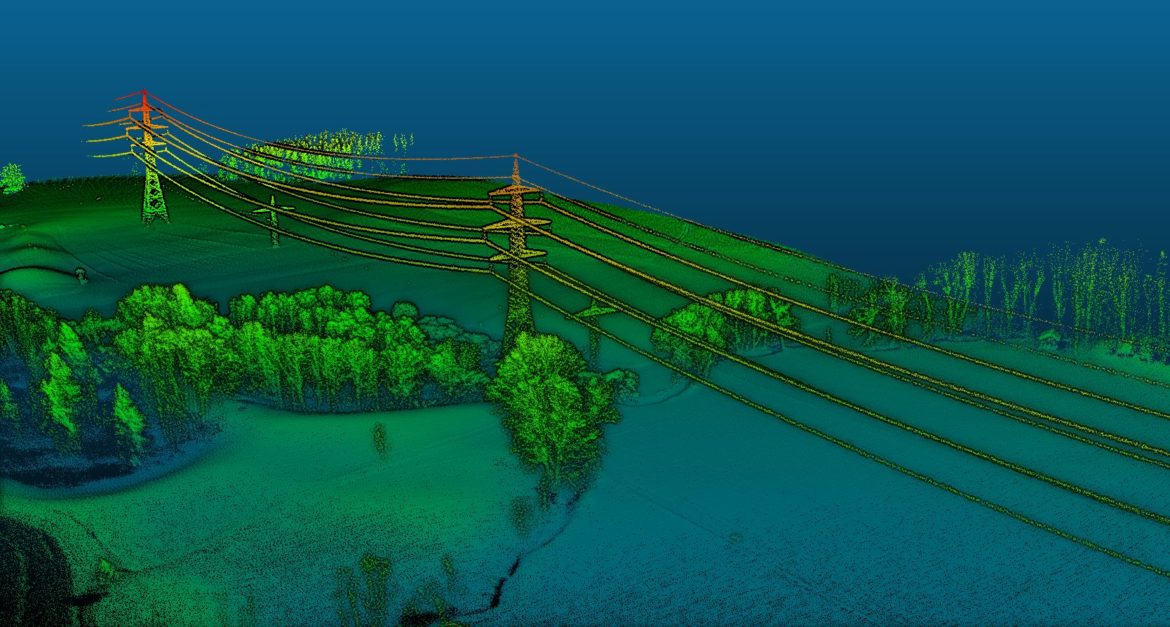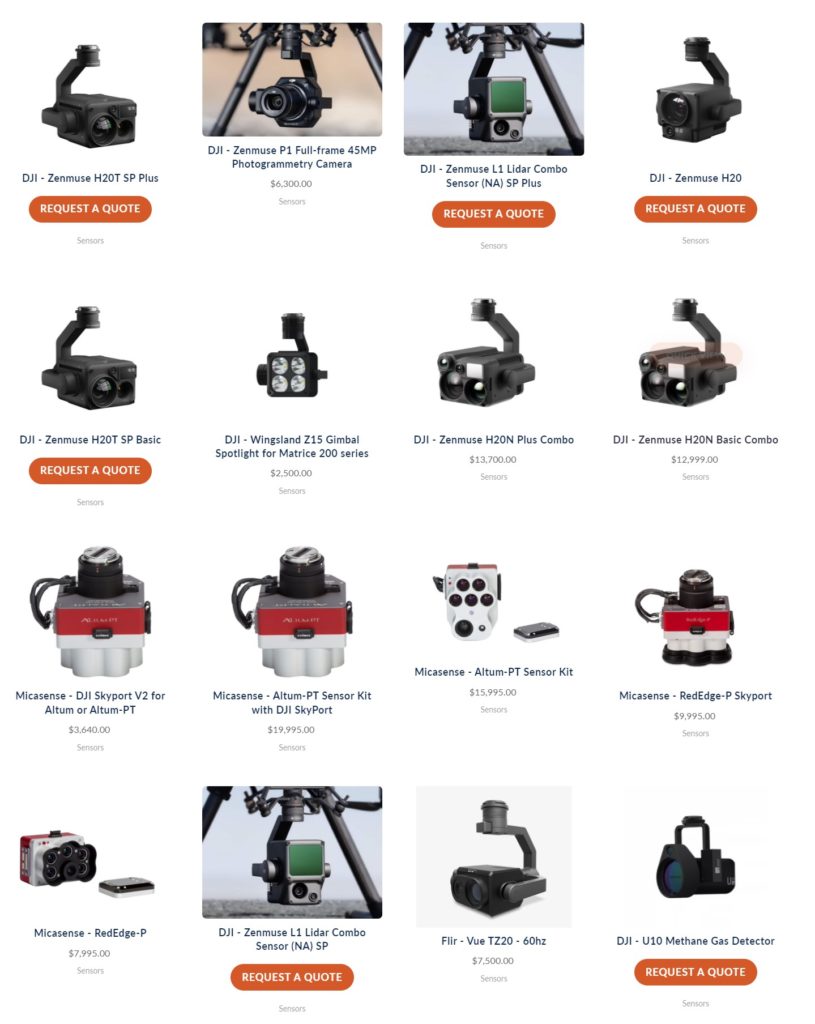
Drones for the Energy Industry
Drones are a natural fit for the energy industry because they can reach high places and do dangerous jobs without risking a pilot in an aircraft or technician climbing a scaffolding. Working around electrical generation or petroleum equipment means that a drone needs to be professional grade and much more durable than the average toy. We recommend drones from the DJI Matrice series, such as the Matrice 300 RTK Series or the Matrice 30 Series, to deal with the rigors of high winds, electromagnetic interference, or the possibility of light rain.
Inspecting Power Plants with Drones
Public utilities, such as power plants, have typically been dangerous and expensive to inspect and fully catalog. Nuclear plants, coal-fired plants or natural gas plants all have tall heat exchanging or ventilation gear that drones are perfectly suited to inspect because of their low weight, high altitude capabilities, and low operating costs. Rugged industrial drones such as the Matrice 300 RTK (M300 or M300 RTK) can fly around, over, and between cooling towers, automatically avoiding larger obstacles. Advanced sensors and redundant navigational aids means that modern drones can deal with the noisy electromagnetic (EM) conditions caused by high-voltage equipment.
The Matrice 300 RTK is DJI’s latest commercial drone platform that takes inspiration from modern aviation systems. Offering up to 55 minutes of flight time, advanced AI capabilities, 6 Directional Sensing & Positioning and more, the M300 RTK sets a whole new standard by combining intelligence with high-performance and unrivaled reliability.
The Matrice 300 RTK has an abundant array of integrated & changeable sensors making it the swiss army knife of drones.
At Blue Skies Drone Rental we help people determine there needs in the rental arena along with training options and in the long term purchasing if someone wants to buy a specific platform.

This article from Power Engineering on HRSG inspection and maintenance even explains how small consumer drones such as the Phantom 4 Pro are able to fly indoors and inspect places that have historically been impossible to reach by any other method. GPS-guided flight isn’t available when flying beneath so much metal, but with a few hours of training the new drone pilot profiled in the study was able to successfully navigate the complex inspection environment without crashing.
Drones For Commercial and Residential Solar Energy

Installation
Before a solar array is even installed, drones can be help precisely measure and document the installation site. This planning step is critical for residential solar where the panels will be installed on an existing structure. Drone planning flights are also helpful for new utility-scale solar installations as well, where drones can survey a large field and show 3D terrain before construction. During installation, a drone can perform daily auditing and show visual progress reports to engineers who don’t even have to present on the site as they download high resolution images and video from a remote location. Software like AeroPoints makes this task even easier and reduces turnaround time. Pre-install inspections need not be expensive: even low-cost, portable, consumer drones like the Mavic 3 Series or EVO 2 Series can perform this vital survey and measurement work.
Inspection and Problem-Solving of Installed Arrays
Routine drone inspections of your solar installations will save money and keep power generation operating at peak capacity. Inspection work can be as simple as programming an automated flight over a large array of panels so that the high-resolution images can be examined later offline. Live, interactive, manual inspections can also be performed using the high-resolution video capabilities of the drone. This task is made even easier by zoom camera units like the DJI Zenmuse H20 and H20T, which can zoom in 30X closer to discern fine detail from a safe working distance. If you want a combo camera with Thermal and RGB capabilities, the Zenmuse H20T is a great camera with 23x Hybrid optical zoom.
It you need a compact but powerful zoom camera with thermal, the Matrice 30T has 160x digital zoom and 20X thermal zoom.

Another benefit of drones for solar comes when you carry a thermal sensor to detect problems with heat buildup or other issues invisible to the naked eye. This capability is even more important when you combine the thermal sensor with a high-resolution visible sensor, like in the Zenmuse H20T. You’re able to see the infrared (heat) wavelengths combined with real-time overlay of the high resolution visual details from the included 4K video camera, making actionable data-driven decisions easier than ever.
Safely Inspect Wind Turbines with Drones
By now you’ve no doubt seen the growing population of wind turbines in the US and around the world as you drive on rural highways. These “farms” of monster towers can generate megawatts of vital electricity, but their colossal height (each blade is the length of a semi trailer!) makes inspection and maintenance a risky endeavor. When proper safety precautions and tethers are used, climbing and inspecting a single tower can consume the entire day for your crew.
Turbine inspection drones, in contrast, can ascend to full turbine height in under a minute and are inherently safer as the pilot remains comfortably on the ground. Using the same Zenmuse H20T camera that was helpful for solar arrays, the fine details of a turbine’s current condition can be captured and analyzed in just a few minutes. With a drone, dozens of wind turbines can be inspected in the same amount of time that it takes to climb and manually inspect a single tower. Other Zoom capable sensors may be a better fit.
Monitoring Pipelines and Power Lines with Drones

Power plants and wind turbines generate power at their own location. But, when you need to deliver energy long distances, drones can help inspect the pipelines and power lines delivering those valuable payloads.
The difficult part about inspection and maintenance of energy delivery systems is the need to travel the length of the line to document the condition of the entire system. Manned aircraft such as helicopters can easily cost thousands per day in fuel and pilot time, but drones can do a similar job for just a fraction of the cost. T&D World has documented drone flights that cut inspection costs in half, with rapid progress in capabilities and cost reductions in the three years since this article was published. The biggest obstacle to universal inspections will be the beyond-visual-line-of-sight (BVLoS) regulations that are working their way through regulating bodies around the world. When BVLOS rules are well-established, expect pipeline and power line inspections to be dominated by energy inspection drones.
Until the the BVLOS rules are clarified, you can begin practicing with long-distance drones such as the Quantum Systems Trinity F90 VTOL fixed-wing hybrid. It has three motors and takes of like a traditional multi-copter, but it then transitions to forward flight using its fixed-wing airfoil, relying on just a single, efficient electric motor. The Trinity can fly for an hour on a single charge and is so quick that your truck will have trouble keeping up. It carries a 21-MP visual camera as the standard payload, but the flexible bay lets you mount almost any small sensor that weighs less than a pound.














